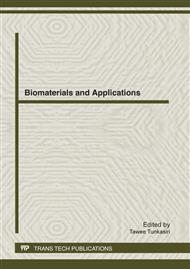p.335
p.339
p.343
p.347
p.351
p.355
p.359
p.363
p.367
Instant Powder of Malabar Tamarind Fruit Extract Prepared by Foam-Mat Method
Abstract:
Garcinia cambogia (Malabar tamarind) is a native plant of Southeast Asia which its dried rind has been extensively employed as an ingredient of the traditional food seasoning and dietary supplements for weight loss. This study aims to prepare the malabar tamarind fruit extract in form of stable foam mat. The development was performed using 1% w/v hydroxypropyl methylcellulose (Methocel K15M) and maltodextrin as foaming agent and foam carrier respectively. The contents of foaming agent were varied: 10, 20, 30, 40 and 50 percent and the contents of foam carrier were also varied: 20, 30, 40 and 50 percent. Highest content of foamed powder received when 50 percent of foaming agent was used and the content of foamed powder was much higher when maltodextrin was added. However, maltodextrin higher than 20 % can cause the disruption of foam formation and resulting in lower yield of foamed powder. Thus malabar tamarind instant powder could be prepared by foam-mat method using 50 percent of 1% methocel and 20 percent of maltodextrin as foaming agent and foam carrier, respectively. Foamed powder of malabar tamarind extract obtained after drying with hot air oven at 70 °C was bulky and stable.
Info:
Periodical:
Pages:
351-354
Citation:
Online since:
April 2012
Authors:
Price:
Сopyright:
© 2012 Trans Tech Publications Ltd. All Rights Reserved
Share:
Citation:


